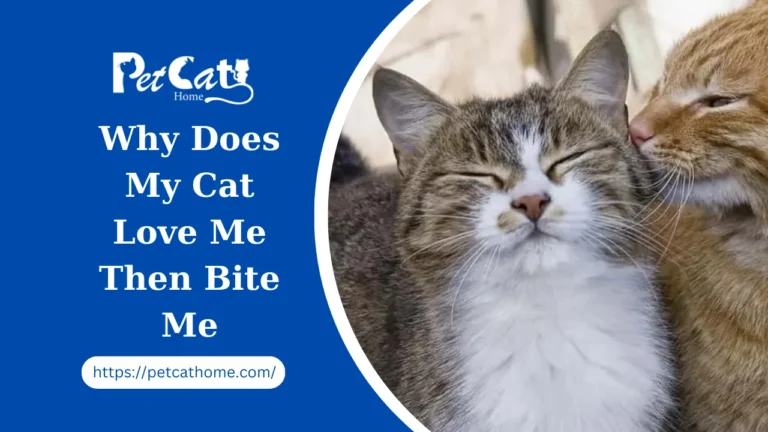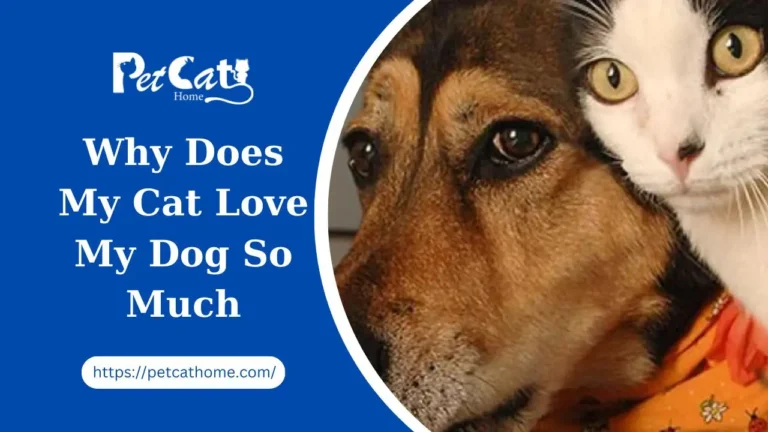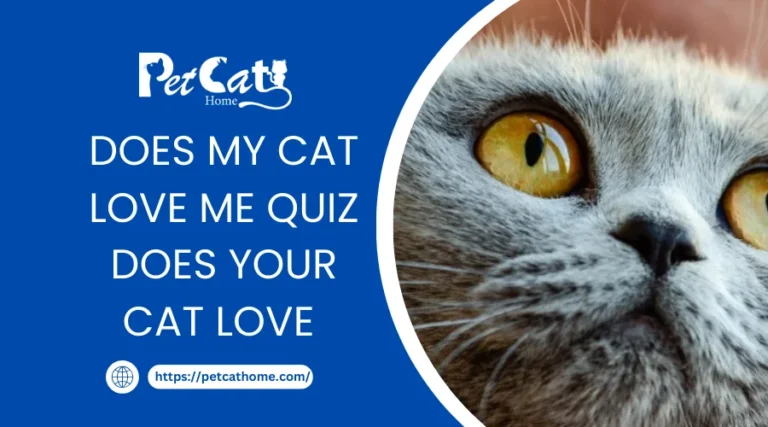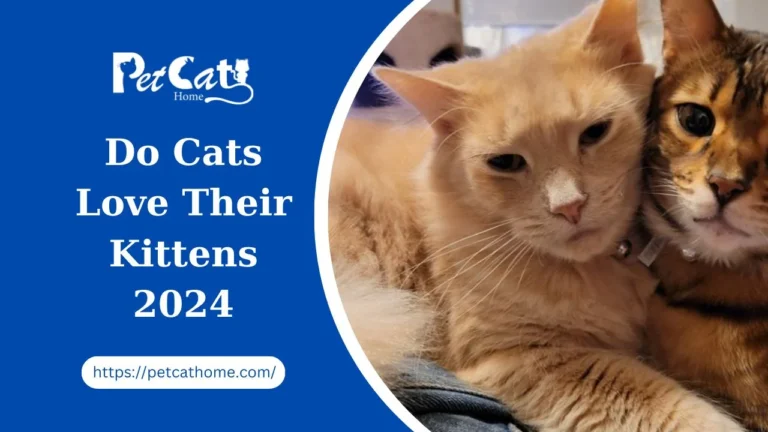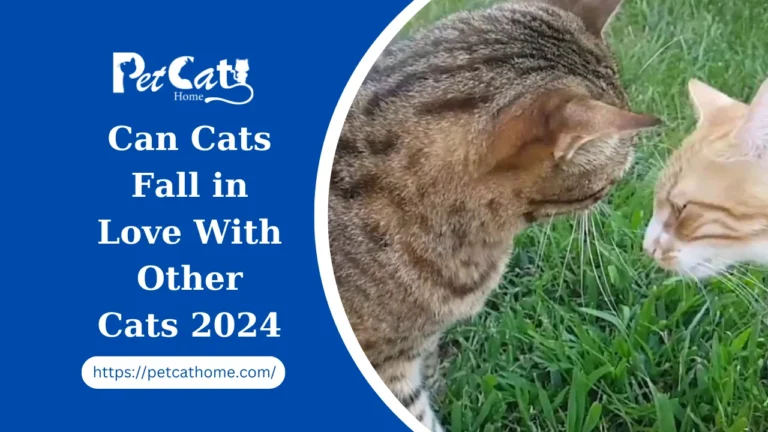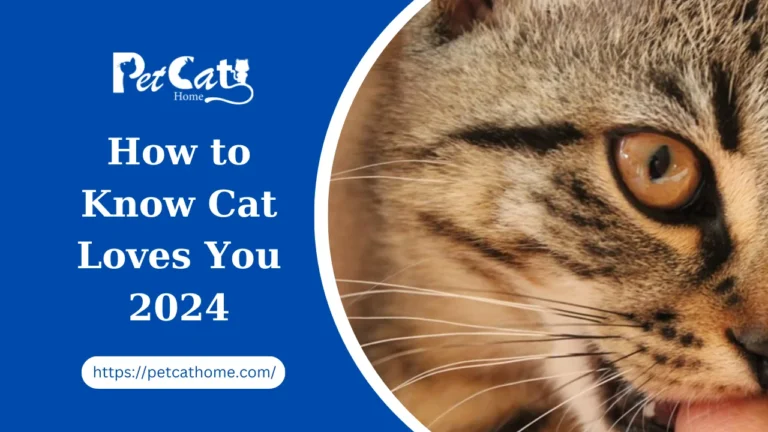Why Do Cats Like Temptations Treat So Much
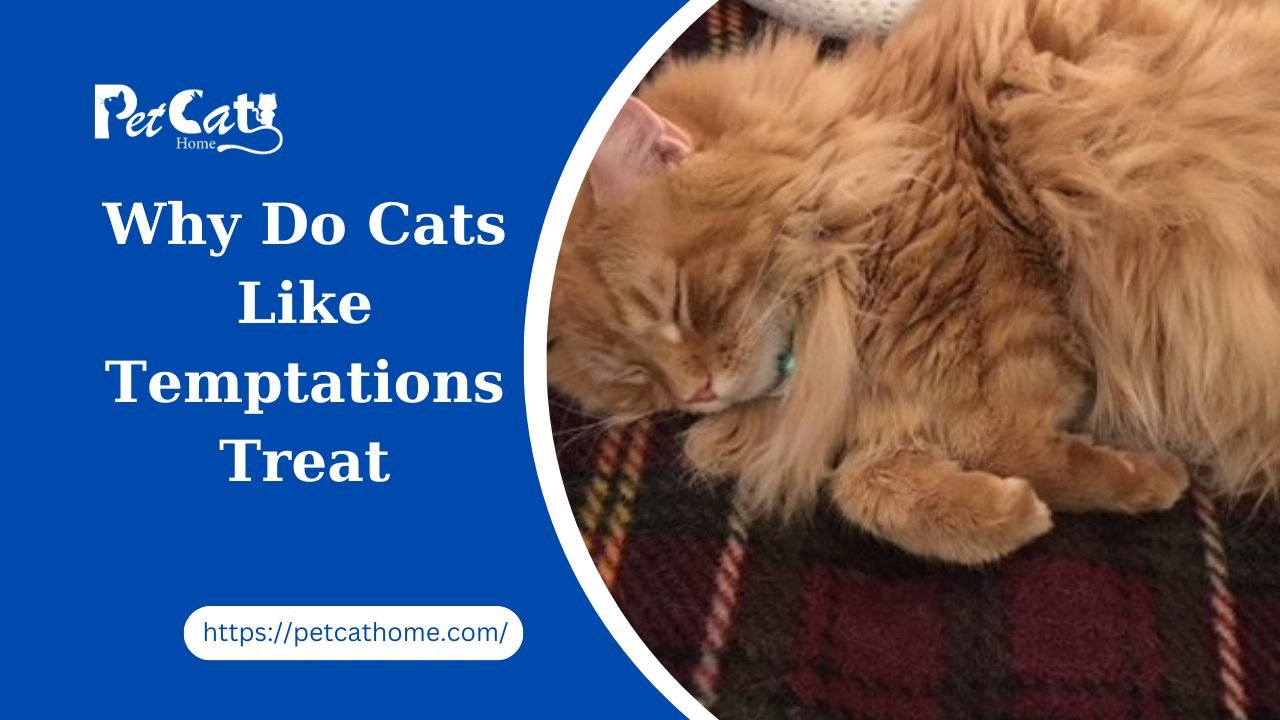
Among the most popular snacks for cats is Temptations. Cats go from eating their regular diet to a few crunchy treats because they can’t get enough of them. However, an excess of these can lead to nutritional inadequacies, weight gain, and addiction. You have to limit how much you eat because of this.
Temptations come in a variety of flavors inspired by meat and fish, which is why cats adore them. Animal digest, a frequent ingredient in pet food, is used to make them. Made from animal protein that hasn’t broken down, it offers Temptations a delicious flavour that cats can’t get enough of. Despite being created using natural components, the treats contain flavourings and chemicals that might lead to addiction in certain cats.
Give your cat no more than the suggested 15 treats per day. Giving your cat too many might lead to behavioural issues including hostility and begging. You’ll need to wean your cat off of the goodies if this occurs.
Can Cats Become Addicted to Temptations?
Many cats are obsessed with the flavour of Temptations snacks and can’t get enough of them. If you’re wondering why cats are addicted to temptations, the major explanation is that the lures they enjoy include a double dose of digestion.
Produced by the chemical or enzyme-dependent hydrolysis of undecomposed animal proteins such as liver, muscle, and soft tissues, animal digestion is a frequent ingredient in pet food and treats.
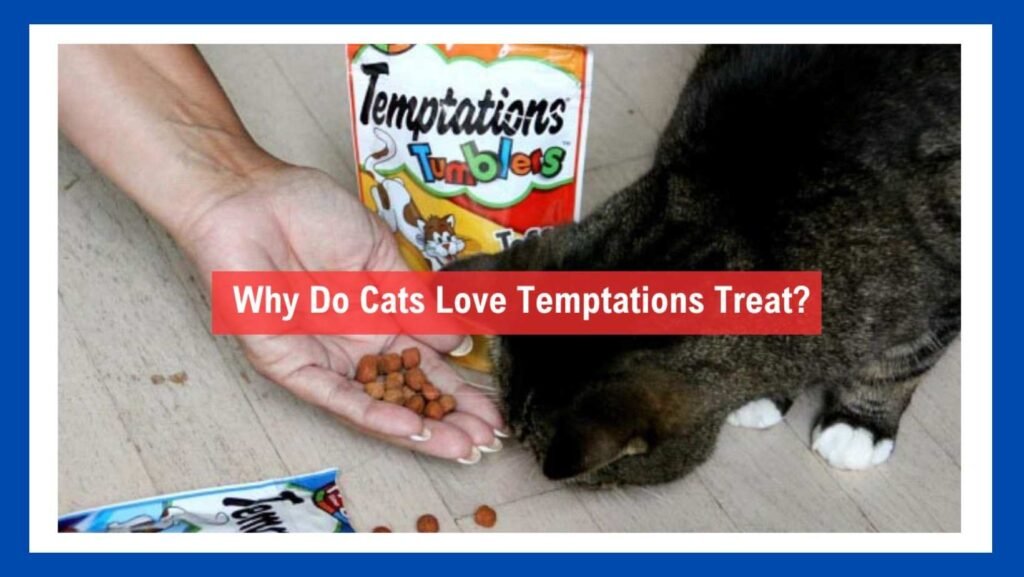
Temptations get their delicious flavour from this process that breaks down the protein into short strings of amino acids, which are the building blocks of protein. Cats have an inbuilt preference for meals that have a strong umami flavour, which is formed by a high concentration of amino acids, according to the scientific journal Animals. That’s why cats find animal digestion so appetizing. Addiction to cat treats can manifest as:
- Meowing and whining
- pawing at the location where you keep the candy
- Anger and restlessness
- stepping back and forth
Additionally, Temptations come in a variety of enticing tastes, such as:
- Tuna
- Salmon
- Shrimp
- Catnip
- Chicken
- Turkey
- Beef
- Lobster
- Creamy dairy
- Crab
All cats, even the pickiest ones, will find something they like because of the variety of tastes available. Regretfully, some cats beg for Temptations and even refuse to eat their normal food since they are so delicious.
You are encouraging your cat’s addiction if you give them a few Temptations each day. Temptation addicts meow, hiss, and scratch to get their hands on the treats.
In an attempt to retrieve their treats, they also scratch the cabinet where they know they are kept. If you don’t stop this habit, it will only get worse.
Are Temptations Treats Safe for Cats?
The snacks from Temptations don’t have any particular health advantages. Your cat is safe to eat because you can only give them a certain quantity each day, so you shouldn’t have any issues. Overfeeding your cat might lead to problems.
Now that you know they’re safe, you probably want to know if temptations are good for cats. Although these treats should only be given in moderation to your cat, they have the following advantages:
Positive Reinforcement
Temptations are a great way to reward positive reinforcement, a training method that can be used in a variety of situations. Treats play a big role in positive reinforcement, which you may utilize to help cats learn new skills and enhance their behaviour.
Cats are more willing to comply with you to obtain a delicious biscuit or two since they find Temptations to be so enjoyable. They don’t pose a health danger because feeding them one at a time reduces the possibility of overfeeding.
Improve Mood
Giving your cat a few Temptations can lift its spirits and help it feel better if it’s feeling down. By adding a few Temptations to a treat-dispensing toy, you can amplify these happy emotions while also improving your cat’s welfare. These toys mimic the natural hunting instincts of cats.
Several techniques that support your mental and emotional health can help you feel better. The following methods are ones that you may find useful:
Physical Activity: Engaging in running as well as any sort of exercise releases endorphins, which are the brain’s natural mood lifters. You might do yoga, dance, brisk walking, or any other enjoyable exercise.
Mindfulness and Meditation: Practicing meditation or practising can help calm the nervous system, reduce stress, and advertise a more positive outlook on life. It entails concentrating on and accepting the current moment without passing judgment.
Healthy Diet: What you eat might affect your mood. Consuming nutritious grains, fruits, vegetables, and omega-3 acids may improve mental wellness.
Sufficient Sleep: It’s important to make sure you get adequate sleep. Seek a regular sleep routine because getting too little sleep can impact your mood.
Social Connections: You can feel better when you spend time with friends, family, or even pets. Support and human connection are important factors in elevating mood.
Reduce Stress: Recognize and attempt to control the stressors in your life. This could entail establishing limits, learning time management skills, or, if necessary, obtaining expert assistance.
Practice Gratitude: Concentrating on your blessings will help you see things differently and feel happier. Think of either journaling your gratitude or just thinking back on the good things in your life.
Because every person is unique, it’s important to experiment with these techniques and determine which ones suit you the best. It’s always a good idea to get help from a mental health professional if depressive or depressing sensations continue.
Build Bonds
Temptations is a terrific food to feed your cat to strengthen your friendship. Enjoying these delicious treats can help cats make positive connections because they will know that you are the one who provides them. Offering Temptations to your fearful, timid, or anxious cat may help the animal come out of its shell. It will also aid in earning your trust.
Creating connections with loved ones, friends, and strangers alike is a fulfilling and vital part of life. The following are some practical strategies to develop and fortify relationships:
Communication: Open, honest, and sensitive interactions constitute the foundation of solid connections. Building understanding and trust is facilitated by speaking clearly and listening intently.
Quality Time: Devoting time to one another fosters shared experiences and deepens relationships. Spending quality time together, whether through activities, deep conversations, or just being in the moment, is priceless.
Support and Empathy: Deeper ties are cultivated when one is present for others during happy and difficult times. Relationships are strengthened when one is empathetic, sympathetic, and supportive during trying times.
Shared Interests: Discovering pastimes or interests in common can strengthen bonds. Enjoying hobbies or pastimes together fosters relationships and mutual delight.
Boundaries and Respect: We must honour each other’s individuality and boundaries. Healthy relationships are cultivated by respecting personal space and appreciating differences.
Celebrate Successes: Bringing each other’s accomplishments and life anniversaries together strengthens relationships and fosters a good environment. Participating in each other’s accomplishments enhances the sense of belonging to a network of support.
Forgiveness and comprehension: Errors and misinterpretations occur. Relationships can be repaired and strengthened by learning to accept forgiveness and appreciate one another’s viewpoints.
Consistency: Keeping in touch and staying in touch even when things are hectic go a long way toward preserving relationships. Little actions like checking in or reaching out can have a significant impact.
Recall that fostering relationships is an ongoing activity that calls for the participation and effort of all parties. Since every relationship is different, it’s important to modify these tactics to suit certain dynamics. Putting real connections first and fostering them over time can result in happy, long-lasting partnerships.
Are Temptations Bad for Cats?
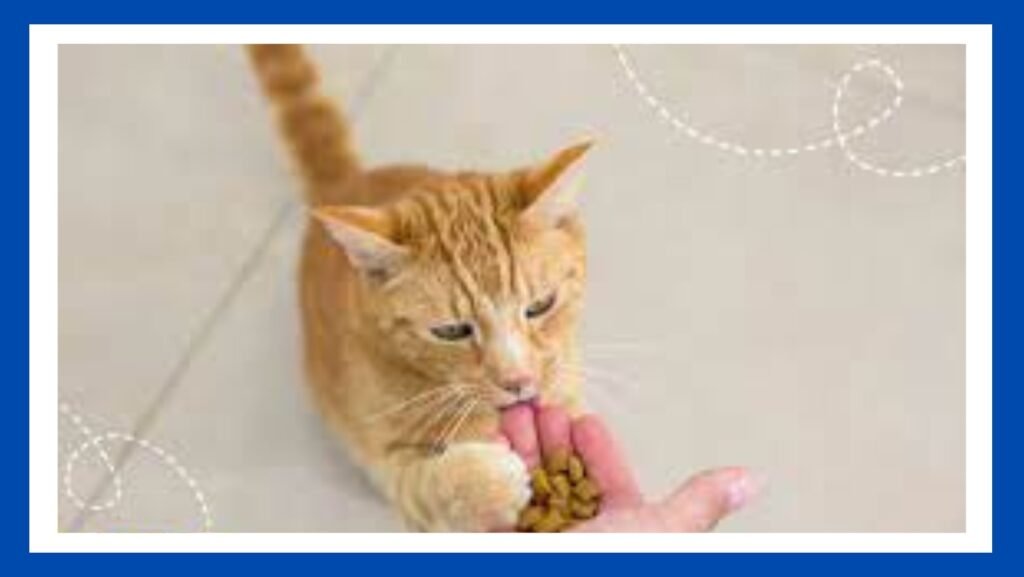
Regretfully, Temptations haven’t always received favourable coverage. It was previously reported that after consuming the treats, 12 cats were poisoned, and two of them went on to experience renal failure. It makes sense that owners would be worried, even though there haven’t been any veterinarian reports of cases.
Good news! When used in moderation, temptations are safe. Nevertheless, before giving any of the following to your cat, be aware of any possible health risks:
Nutritional Deficiencies
Your cat won’t get the vitamins, minerals, and other nutrients it needs from its regular, balanced diet if you let it overindulge in Temptations.
VCA Hospitals claims that feeding cats commercial dry food of low quality can lead to nutritional deficits. They may also arise from improper supplementation of their commercial meals.
Make sure to track the number of Temptations you give your cat at a time and never give them more than the daily recommended amount. You run the danger of your cat being deficient if you do.
When the body fails to obtain enough of the vital nutrients it needs to stay healthy, nutritional deficiencies happen. These inadequacies can affect general well-being and result in several health problems. The following list of typical nutritional deficits and their consequences:
Iron Deficiency: Iron deficiency can result in anaemia, which can cause weakness, exhaustion, pale complexion, and trouble focusing. For the blood to carry oxygen, iron is essential.
Vitamin D Deficiency: Low levels of vitamin D can lead to weariness, weakening bones, and a higher risk of fractures. For healthy bones and the absorption of calcium, vitamin D is essential.
Vitamin B12 Deficiency: This can cause tiredness, weakness, numbness or tingling in the legs and arms, difficulty walking, and mood changes. Red blood cell formation and nerve function depend on vitamin B12.
Calcium Deficiency: Too little calcium in the diet can cause osteoporosis, tooth decay, cramping in the muscles, and fractures. Muscle and bone strength both depend on calcium.
Iodine Deficiency: Low iodine levels can cause thyroid issues that impact growth, development, and metabolism. Goiter, exhaustion, weight gain, and cognitive decline are possible side effects.
Magnesium Deficiency: Symptoms consist of muscle cramps, lack of energy, rapid heart rate, and weakness. Magnesium is essential for heart rhythm regulation, muscular contraction, and neuron function.
Vitamin A Deficiency: Insufficient amounts of vitamin A can harm immunological function, growth and development, and vision. It may result in dry skin, night blindness, and a heightened vulnerability to infections.
Vitamin C deficiency: This can result in scurvy, which can cause joint pain, oedema, weariness, and easy bruising. Vitamin C is essential for immune system performance, collagen synthesis, and wound healing.
Eating a balanced diet full of vegetables, fruits, whole grains, protein-rich dairy products, and dairy substitutes is necessary to address nutritional deficits.
Grain Products
Grain goods are an element of Temptation, but cats don’t normally consume them. This is assumed to be the case since it keeps them safe from consuming toxic plants. Temptations aren’t for every cat because a tiny portion of cats are sensitive to grains.
Grain, however, is a good source of digestible proteins, fibre, vitamins, minerals, and vital fatty acids. For this reason, temptations are acceptable in moderation—but you shouldn’t give them to your cat.
Grain products are a broad category of foods made from grains that are a staple of many diets around the world. These goods offer vital nutrition, energy, and fibre. Some typical grain products are as follows:
Bread: Available in a variety of varieties such as whole wheat, multigrain, or sourdough, bread is a mainstay in many diets. It’s a major source of energy-giving carbohydrates and frequently includes B vitamins and fibre.
Cereal: Breakfast cereals are made from cereal grains, which include rice, wheat, maize, and oats. They provide a quick and easy breakfast choice and are available in a variety of textures and flavours. Some have mineral and vitamin fortification.
Pasta: Made in wheat as well as other grains, pasta serves as an easy food available in numerous shapes and sizes. It can be combined with different sauces and seasonings to create a well-balanced meal, and it is a source of carbs.
Rice: A staple in many culinary traditions, rice is available in a variety of forms, including brown, white, jasmine, and basmati. It is a carbohydrate source and a foundation for many different meals around the world.
Quinoa: Known as a pseudocereal, this wholesome grain-like seed is rich in fibre, protein, and a variety of vitamins and minerals. It’s a comprehensive source of plant-based protein and a fantastic gluten-free substitute.
Barley: Packed with fibre, vitamins, and minerals, barley is frequently used in soups, stews, and salads. It gives food a chewy texture and nutty flavour.
Cornmeal: Made from dried corn, cornmeal is ground and used to cover fried meals or to make cornbread and polenta. It can be included in a balanced diet and is a healthy source of carbs.
Couscous: Made from semolina wheat, a bowl is a staple in North African cuisine. It absorbs tastes well, is easy to cook quickly, and may be used as an ingredient for a variety of meals.
Because they provide fibre, vitamins, minerals, carbs, and a balanced diet, grain products are essential. Because whole grains have more fibre and other nutrients, choosing these goods has added nutritional benefits. Including a range of grain products in meals guarantees a varied intake of nutrients and increases diet flexibility.
Corn Gluten
Corn gluten is added to some Temptation types as an inexpensive source of protein. It is a filler ingredient, nevertheless, with little nutritional benefit because it lacks amino acids.
In the worst situations, if your cat consumes corn gluten regularly, they may eventually become extremely allergic to it, which could lead to gastrointestinal and skin issues.
One of the byproducts of processing corn is corn gluten meal. It’s a renewable, plant-derived mix used in many different applications:
Gardening: It may surprise you to learn that corn gluten flour is frequently used as a natural pre-emergent pesticide and organic weed suppressor. It stops seeds from germination, which stops weeds from growing in lawns and gardens.
Animal Feed: Corn gluten meal is used in animal feed, especially for poultry and animals, because of its high protein content. For these animals, it provides a source of energy and protein.
Nutritional Supplement: In some pet meals, maize gluten meal is used as an additional source of protein.
Industrial uses: It has also been used in the manufacturing of biodegradable polymers and a variety of adhesives and other industrial uses.
The gluten proteins that cause problems for those with celiac disease or gluten sensitivity are absent from maize gluten, even though the word “gluten” appears in its name.
Added Flavorings
Salt and colourings are just two of the additional flavourings found in Temptations sweets. Despite being natural ingredients, these are not meals that cats typically eat, which could lead to health problems and digestive problems.
Similar to how these ingredients are addictive, Temptations’ appeal to cats is partly due to this. They may have detrimental effects on cats’ mental health as well as their physical health, leading to behavioural problems.
Because of these elements, Temptations are the cat equivalent of junk food.
These flavourings, which are used in a variety of food and beverage products, might be artificial or natural. This is an explanation:
Natural flavourings: Those that come from foods such as plants, fruits, vegetables, meats, herbs, spices, and dairy products. To improve or mimic particular flavours, they can include extracts, essential oils, or parts separated from natural sources.
Artificial Flavorings: These are chemicals that are created to imitate flavours found in nature or deliver unique taste profiles. They are made chemically, but they are frequently designed to resemble particular natural tastes.
Enhancers of Flavor: Certain drugs improve the flavours that already exist rather than adding a new one. Monosodium glutamate (MSG), for example, is well renowned for enhancing savoury flavours without offering a unique flavour of its own.
Application in Food Production: Condiments, sauces, beverages, snacks, processed meals, and even some pharmaceutical goods all frequently contain additional flavourings. They enhance palatability, preserve flavour consistency, and produce the intended sensory sensations.
Regulation and Labeling: Food regulatory organizations mandate that producers disclose additional flavourings on product labels in many nations. These labels frequently state whether the flavouring is synthetic, natural, or a mix of the two.
Safety and Concerns: Although most artificial flavourings are deemed safe for ingestion if used in excess, some may pose health risks. Furthermore, some people may react to natural or artificial flavouring compounds if they have particular allergies or sensitivities.
Flavouring Processes: There are several ways to make flavourings that are added. To get desired flavours and smells, a variety of processes are used, including extraction, distillation, fermentation, and chemical synthesis.
Customers should be informed about additional flavourings in food items, particularly if they have dietary requirements, allergies, or preferences for natural rather than artificial substances.
Weight Gain
Every treat has less than two calories. The typical indoor cat only needs 20 calories per pound to maintain its weight, so this isn’t much. Cats that live outside require somewhat more calories—35 for every pound of body weight.
You run the danger of making your cat gain weight if you give it Temptation treats too frequently. It’s challenging to match the number of calories cats require to our own dietary needs. However, given their diminutive size, many owners are taken aback by how little energy they seem to require. Among the illnesses brought on by being overweight are:
- Arthritis
- Difficulty moving
- Heart, kidney, and liver problems
- Diabetes
- Cystitis
To put things in perspective, wild cats get the nutrition they require from eating six to nine tiny mice per day.
Diarrhea
Diarrhea might result from temptations. This could be the result of feeding your cat too many treats over an extended period, or it could be the result of adding goodies recently and your cat’s body becoming used to them.
Your cat’s diarrhoea should stop after it becomes accustomed to them. Diarrhoea, however, is never a good sign. Reduce the quantity of Temptations your cat eats and wait a few days before giving it again if it starts to have stomach problems.
The common digestive ailment known as diarrhoea is typified by frequent, loose, or watery bowel motions. Medications, food, infections, and underlying medical issues are frequently the causes. Here are some essential details regarding diarrhoea:
Causes: Common causes consist of bacterial or viral infections (such as gastroenteritis), poisoning due to consumption of water or food that has been contaminated, intolerance to lactose, certain drugs, inflammatory bowel conditions (like Crohn’s disease), or stress.
Symptoms: Frequent loose stools are not the only ones; bloating, nausea, vomiting, fever, and dehydration can all be symptoms. Severe cases may result in electrolyte imbalances and dehydration.
Treatment: Drinking lots of fluids containing electrolytes will help you keep hydrated and prevent dehydration in moderate cases. Temporarily abstaining from dairy, spicy meals, caffeine, and high-fat foods may be beneficial. Although over-the-counter drugs like loperamide (Imodium) help lessen symptoms, they shouldn’t be used in situations of bloody diarrhoea or certain diseases.
Dietary Considerations: The BRAT diet, which consists of toast, applesauce, bananas, and rice, can help bind stools and be easy on the stomach. Probiotics may also help to restore the proper balance of gut flora.
When to Get Medical Help: It’s critical to get medical help right away if diarrhoea lasts more than a few days, is accompanied by severe abdominal pain, dehydration symptoms (such as extreme thirst, dry mouth, dark urine), blood in the stools, or affects children or older adults.
Prevention: Drinking clean water and maintaining regular hand-washing habits, particularly before preparing or eating food, will help avert some bouts of diarrhoea. The risk of illnesses that cause diarrhoea can also be reduced by exercising caution when preparing food and avoiding undercooked or uncooked foods when travelling.
Medical Conditions: Recurrent or prolonged diarrhoea may indicate the presence of an underlying medical disease. It’s critical to seek medical assessment to diagnose and treat illnesses such as inflammatory bowel disease (IBD), celiac disease, and irritable bowel syndrome (IBS).
Recall that while the majority of diarrhoea cases go away on their own, severe or protracted diarrhoea has to be treated by a doctor to prevent dehydration and treat any underlying problems.
Allergies
Temptations contain particular chemicals that cats who are sensitive to may experience an allergic response after consuming them. Until the cat has eaten the food that causes the reaction, owners frequently are unaware that their cat has an allergy. Among the signs of a cat’s Temptation allergy are:
- Itchy skin
- Hair loss
- Diarrhea
- Flatulence
- Vomiting
- Abdominal pain
- Listlessness
- Scratching
- Pustule-looking bumps on the skin
The Journal of Nutrition states that dermatological symptoms are the most typical manifestation of food allergies. The main Temptations range of flavours—chicken, beef, and fish—are the most often occurring allergies.
Although it happens less frequently, cats may experience an allergic reaction after consuming the treats. Watch your cat closely for any symptoms of illness.
What Do Temptations Do to Cats?
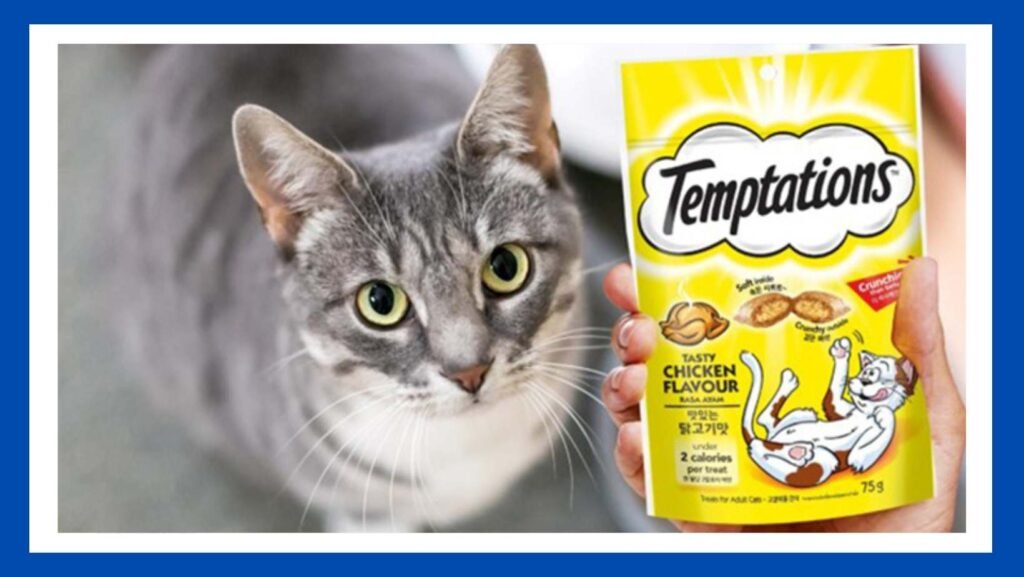
Do cat treats make cats hyper? is a question that many owners have. Regretfully, there is no easy solution. After consuming Temptations, some cats choose not to become hyper; instead, they accept the delicious delicacy and continue with their lives.
Nevertheless, some cats react negatively to cat treats and become agitated very quickly. Excessive joy at the thought of their favourite foods could be one explanation for this.
Some cats are very driven by food and may spend all day chasing after treats. Cats who have become dependent on cat treats are most likely to experience this. Treat-induced hyperactivity and excessive excitement are warning indicators that your pet is receiving too many goodies.
Cat snacks give cats an energy boost that gives them more energy to play, which is another reason why they make them hyper. This is how hyperactivity appears:
- In Zoomies, felines sprint throughout the house
- hopping from piece to piece of furniture
- Ascending
- pursuing people and animals
- excessive grooming and licking
- Meowing
- Using your paws to bat
As long as you haven’t given your cat too many treats, this is perfectly normal.
Can Cats Eat Temptations as a Meal?
The majority of Temptations treats contain all the nutrients your cat requires and are 100% complete and balanced. They should, however, be fed in addition to a well-balanced meal and should not be used in place of your cat’s regular food.
Only 15 treats per 10 pounds (4.5 kg) of Temptations should be given each day. You can feed them all at once or intermittently throughout the day, but remember to never feed them more than is advised.
As long as you always have fresh water available, you can swap out ¼ cup of Whiskas Meaty Selections for ¼ cup of Temptations snacks, according to the producers. To enhance the texture and consistency of the treats, you might want to think about combining them with your pet’s canned wet food if you decide to do this.
You can give your cat ten treats at once each day until the symptoms go away if you’re feeding them Temptations to get rid of hairballs. Provide ten biscuits to each cat to avoid hairballs.
Using portion control techniques is the best defence against your cat overindulging in Temptations goodies.
How To Wean a Cat off Temptations
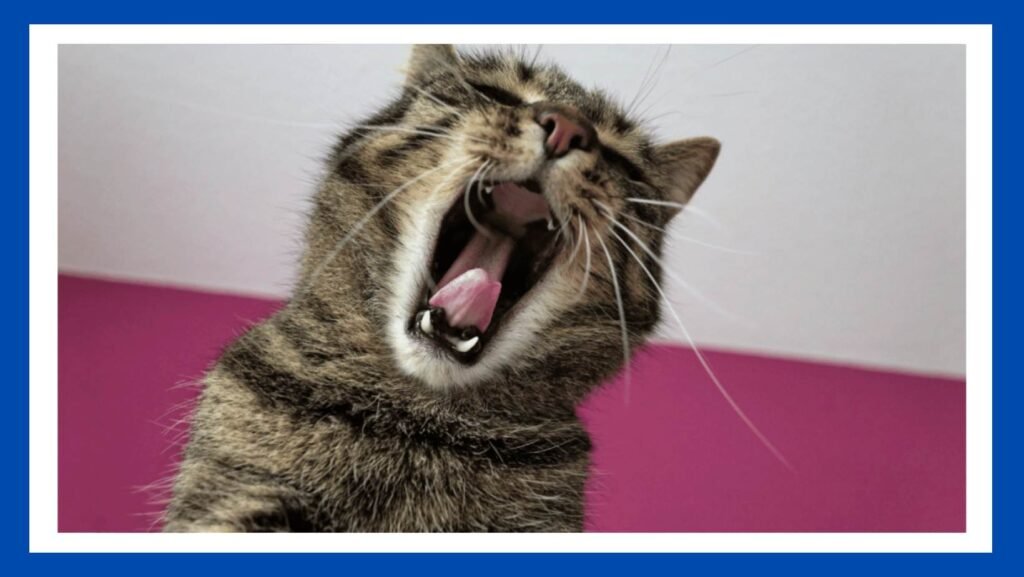
Sometimes cats get overly dependent on Temptations and require assistance to kick the habit. In other cases, cats feel ill after consuming them and require a change to healthier treats.
Unfortunately, your pet will get caught in a vicious loop if you try to calm it down and cease its bad habits by giving it rewards.
Breaking a cat treatment addiction takes time and care, but it is feasible. You have to be strong while weaning your cat off of temptation. Even if your cat bites and scratches at you for treats, resist their demands. You’ll have to begin the procedure over if you do.
Automatic Feeder
Because they know their owners are in charge of feeding them, cats act badly when they receive goodies. Your pet will use this against you if you are connected. By taking you out of the picture with an automatic feeder, you can deter your cat from pestering you for rewards.
Reputable feeders can be set up to deliver goodies at specific times of the day, establishing a rigid schedule that your pet must become accustomed to receiving treats. This naturally aids in reducing the quantity of food you give your cat.
A treat-dispensing toy is an additional choice. Make your cat work for its rewards, and it will learn that good food is a reward and that it must be earned.
An automatic feeder is a gadget that automatically dispenses food for pets at set intervals without the need for human assistance. The following are important features of automatic feeders:
Functionality: These gadgets are made to fit a variety of pets, such as dogs, cats, birds, and tiny animals like guinea pigs or rabbits. They are available in a range of sizes and patterns. Depending on the model, they can dispense food that is wet or dry.
Scheduled Feeding: With the help of automatic feeders, pet owners may set up particular feeding times, ensuring that their animals are fed regularly even when they are unable to do so because they are away from home.
Portion Control: By providing portion control options, certain feeders allow for accurate portion measurement and distribution. This function keeps a pet’s diet under control and helps to avoid overfeeding or underfeeding.
Customizable Settings: More sophisticated versions may offer flexible settings, enabling people with pets to adjust eating schedules, size of portions, and frequency by their pet’s tailored dietary needs.
Ease of Use: Many natural feeders are now user-friendly, featuring intuitive programming interfaces or electronic screens for setting time limits and portion sizes. To summon pets during mealtimes, some also feature voice recording features.
Power Source: These gadgets can be hooked into a power outlet or often run on batteries. Because battery-operated feeders don’t need to be close to electricity outlets, they can be placed more conveniently.
Benefits: Pet owners who have hectic schedules or must spend a lot of time away from home will find automatic feeders useful. They give pets a reliable feeding schedule and are very helpful.
The best solution to guarantee the pet’s nutrition and well-being even when the owner is away can be found by choosing an automatic feeder based on the pet’s size, feeding habits, and desired features (such as portion control or scheduling flexibility).
Change the Treats
If Temptations are the issue, consider replacing them with a less delicious reward brand to reduce your cat’s appetite for junk food.
Another option is to serve tiny servings of a healthy treat dish, like cooked chicken or tuna, in place of the Temptations. In this manner, your cat will get the protein and amino acids it needs without consuming extraneous components.
Changing out treats for pets can be a good idea for several reasons, including their general well-being, preferences, and general health. Here are some things to think about:
Nutritional Variability: Offering a variety of treats keeps pets from becoming accustomed to one kind and from missing out on other vital nutrients that are present in other treats.
Preventing Monotony: Over time, pets and people alike may become tired of the same rewards. Occasionally switching up the snacks keeps them engaged and enthusiastic throughout training sessions or as rewards.
Handling Allergies or Sensitivities: Changing to treats with different ingredients may help if a pet exhibits symptoms of allergies or sensitivities to certain substances in their present treats.
Adapting to Health Needs: snacks that address a pet’s particular health issues or dietary requirements, such as dental or low-calorie snacks for dental health, may be beneficial for the pet.
Preference and Enjoyment: Pets have preferences, just like people do. Identifying your pet’s favourite flavours, textures, or treat varieties will help you train or reward them more successfully.
Gradual Transition: To prevent an upset stomach, it’s crucial to switch snacks gradually. Pets can acclimate better if new goodies are gradually mixed with old ones over a few days in increasing amounts.
Seeing Reactions: Observe your pet’s response to novel treats. Keep an eye out for any negative effects, such as allergic reactions, behavioural changes, or stomach problems. Should any doubts emerge, speak with a veterinarian.
Providing pets with varied treats can be a beneficial habit that brings them happiness, diversity, and nutritional equilibrium. Choosing and adding new delicacies to their diet requires careful consideration of their dietary requirements, preferences, and any health concerns.
Playtime and Exercise
Encourage play and exercise to divert your cat’s attention from rewards. Because they’re bored, some cats will only accept goodies. Play with your cat’s favourite toys and activities for extended periods, and give it as much mental and physical stimulation as you can to avoid this.
This will not only help your cat overcome its addiction to temptation, but it will also maintain a healthy weight. If your cat has gained weight as a result of eating too many goodies, this is crucial.
Exercise and playtime are essential for a pet’s physical and emotional health. The following explains their significance and how to include them in a pet’s daily routine:
Physical Health: Playing and exercising regularly helps pets stay in a healthy weight range, strengthen and tone their muscles, and improve their cardiovascular health.
Mental Stimulation: Engaging in games and other activities stimulates an animal’s mind, preventing boredom, anxiousness, and destructive behaviours that may arise via lack of mental stimulation.
Bonding: Playtime fosters an intense connection between pets and their owners. It’s a chance to engage, speak, and establish confidence, enhancing the bond between people and animals.
Energy Release: Pets need a way to let off steam, especially if they are young or of high-energy breeds. Exercise and play offer a healthy method to release this energy.
Activities: Depending on the species, breed, age, and personal preferences of the pet, different play or exercise regimens are used. Games of fetch, tug-of-war, jogging, swimming, agility courses, and mentally stimulating interactive toys are a few examples of activities.
Consistency and Routine: Establishing an ongoing playtime and exercise routine helps animal companions know when to expect movement reducing anxiety alongside behavioural issues.
Indoor Activities: Puzzle toys, obstacle courses, and laser pointers for cats are a few examples of indoor activities that can keep pets engaged both mentally and physically when outdoor exercise isn’t an option.
Safety: Make sure that play environments are safe by eliminating any risks and utilizing the right toys or equipment to stop injuries.
Variety: To keep your pet interested, introduce them to a range of activities. Boredom can be avoided by switching up the toys or the routine.
Gradual Increases: To avoid strain or injury, start an exercise program cautiously and raise activity levels gradually, especially for inactive pets.
Consultation: To evaluate appropriate activity levels and activities for certain breeds or pets with health issues, it is important to see a veterinarian.
A pet’s general health and contentment are greatly enhanced by regular fun and exercise. Adapting activities to your pet’s specific requirements and interests guarantees that they get the mental and physical stimulation needed for a happy and healthy existence.
Clicker Training
If you go back to clicker training, your cat will have the opportunity to earn a treat rather than just getting one whenever it wants one. Your cat will feel less reliant on having them at all times of the day when they perceive them almost as a prize or reward.
By linking a clicking sound to a reward, clicker training is a positive reinforcement technique used to train pets—mostly dogs, but also cats and other animals as well. Here are its advantages and how it functions:
Concept: Clicker training is based on the operant conditioning principle, which states that a particular behaviour is rewarded when it is combined with a reward—typically food or a treat. The clicker functions as an accurate marker that shows the precise instant the intended activity takes place.
Clicker Sound: The clicker emits a distinct, in-keeping sound that the pet associates with a reward. The training procedure is more efficient and evident to the pet cat love when this sound is used to bridge the time gap between the unwanted behaviour and the delivery of the reward.
Training Procedure: The trainer clicks the clicker and gives the treat to the pet right away when it exhibits the desired behaviour. The behaviour that resulted in the click is reinforced when the pet learns to associate the click with the reward through repetition.
Accuracy: Clicker training facilitates accurate communication between the pet and the trainer. It makes the training process more effective by assisting in identifying the precise behaviour that is being reinforced.
Positive Reinforcement: Clicker instructions focus on promoting positive reinforcement, rewarding behaviours that are desired rather than punishing those that are undesirable. The trainer and pet develop a positive, trustworthy relationship as a result of this method.
Versatility: From simple obedience instructions like sit, remain, and come to more intricate tricks and behaviours, clicker training can be used to teach a broad variety of actions.
Consistency: Consistency is vital to clicker training. For the behaviour to be adequately reinforced, a reward must always come after the click.
Practice and Patience: Clicker training calls for consistency, practice, and patience, just like any other training technique. Pets may need some time to learn that the clicker, the behaviour, and the reward are related.
Benefits: Clicker training promotes cerebral stimulation and active participation in dogs. It’s an enjoyable and fruitful method of training pets that fosters a close relationship between the trainer and the animal.
It is often known that clicker training is a compassionate and successful way to teach pets new behaviours or change their current ones. It is a well-liked option for trainers and pet owners because it is based on clear communication and positive reinforcement.
Ration Treats
Weaning your cat off of goodies is best accomplished by restricting their consumption as much as possible. This is an unpleasant procedure because it’s quite likely that your cat will want them. If you wanted faster results, you could also try completely restricting them.
This is an excellent choice to employ in conjunction with playing with your pet if you give goodies to your cat whenever it requests them. Your cat’s addiction will eventually end when they stop thinking about the rewards.
Giving your cat more Temptation treats than is advised each day is not safe, but the daily suggested quantity is. Take care not to feed your cat love too much, and keep an eye on it to make sure it doesn’t exhibit any serious behavioural issues. You will need to wean your cat off the goodies if it does exhibit issues or signs of addiction.
FAQs
Are Temptations suitable for all cats?
When provided in moderation, temptations are generally safe for the majority of cats. Nevertheless, certain elements in Temptations may not be acceptable for cats with certain dietary sensitivities or medical conditions. If your cat has any health issues or special dietary requirements, it is wise to review the ingredients and speak with a veterinarian.
How often should I offer Temptations to my cat?
The key is moderation. Temptations ought to be given to cats only as infrequent treats, not as a substantial part of their diet. To prevent possible health problems, treats—including Temptations—should make up no more than ten per cent of an animal’s daily caloric intake.
Can Temptations replace a cat’s regular meals?
No, a cat’s normal, balanced meals should not be substituted with Temptations. They are deficient in vital elements needed for a full and well-balanced diet. They shouldn’t be used in place of appropriate cat food, even though they can be occasionally used as prizes or for training.
What are the potential health risks associated with excessive treatment consumption?
Overindulgence in treats, such as Temptations, can cause cats to gain weight, experience digestive problems, nutritional imbalances, or even become obese. Regular overindulgence in treats may cause loose stool, vomiting, or other gastrointestinal issues in certain cats.
Are homemade treats a better option than commercial ones?
You can have better control over the ingredients and quality of homemade goods. If properly made using cat-safe ingredients and a well-balanced diet, they might be a suitable choice. But it’s important to make sure homemade snacks satisfy a cat’s nutritional requirements and don’t contain anything dangerous for them, like garlic, onions, or certain spices.
Conclusion
Temptations’ captivating appeal to cats is a result of a combination of cognitive stimulation, sensory gratification, and the human-feline link. Comprehending these elements clarifies the reason for cats’ preference for these goodies.
